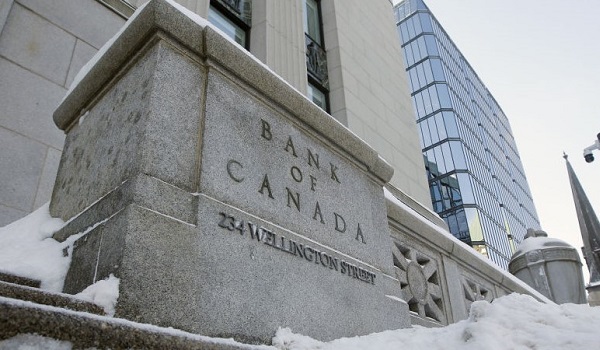Bank of Canada policymakers on a consensus for more rate cuts if inflation keeps easing
There is a “clear consensus” among Bank of Canada policy makers that more interest rate cuts will be appropriate as long as inflation continues to decline as forecast, according to a summary of the latest monetary policy discussions.
The document, published Wednesday, captures an important shift at the central bank, which cut its policy interest rate by a quarter point on July 24. Members of the governing council are becoming less concerned about a rebound in inflation, and more worried about weak economic growth and possibly overshooting the bank’s 2-per-cent inflation target on the way down.
Governor Tiff Macklem and his team still believe economic growth will pick up over the back half of 2024 and into next year while inflation drifts lower. But they’re becoming more attuned to downside risks that could tip the Canadian economy into a recession and jeopardize a soft-landing.
“There is a risk that consumer spending could be significantly weaker than expected in 2025 and 2026 given the number of households likely to be renewing their mortgage at higher rates,” the summary says.
“Further weakness in the labour market could delay the rebound in consumption, putting downward pressure on growth and inflation.”
High inflation has become a less pressing concern. The annual rate of consumer price index growth has been below 3 per cent since the start of the year and was 2.7 per cent in June – a far cry from the 8.1 per cent reached in mid-2022.
Some prices continue to rise quickly, notably for rent and some services. But over all, the central bank’s policy makers “felt increasingly confident that the ingredients for price stability were in place.”
The Canadian economy, meanwhile, is buckling under the weight of restrictive interest rates. Consumer spending is tepid, unemployment is rising and GDP growth is weak over all and negative on a per-capita basis.
This combination of falling inflation and economic stagnation prompted the bank to deliver back-to-back rate cuts in June and July, bringing the policy rate down to 4.5 per cent from 5 per cent.
The bank remains tight-lipped about the pace of future interest rate cuts, and the summary cautioned that “there was no predetermined path for the policy rate.” However, markets have upped their bets on another cut in September and are now pricing in the possibility of cuts in October and December as well.
Over the past week, traders have piled into bets on faster monetary policy easing after surprisingly weak employment data in the United States, which stoked fears of a recession. Shifting market sentiment about the U.S. economy also sparked a huge sell-off in global stock markets on Friday and Monday.
For the Bank of Canada, there are signs that inflation should continue to move lower. The economy remains in “excess supply,” and there is growing slack in the labour market, seen in the decline in job postings and the rise unemployment rate to 6.4 per cent from 4.8 per cent two years ago.
Moreover, the bank appears to be less concerned that inflation could be knocked off course by a rebound in real estate prices as interest rates fall: “Housing resale activity had been slower than expected,” the summary notes.
Still, some members of the governing council remain cautious about waning inflationary pressures: “The output gap could currently be smaller than assumed, and excess supply could be absorbed quickly when growth picks up,” the summary says. Meanwhile, strong wage increases “could lead to persistent price pressures for many services.”
The overall outlook for economic growth and inflation is being clouded somewhat by uncertainty around the pace of population growth, in light of federal government caps on non-permanent residents announced earlier this year, the summary says.
This article was first reported by The Globe and Mail













